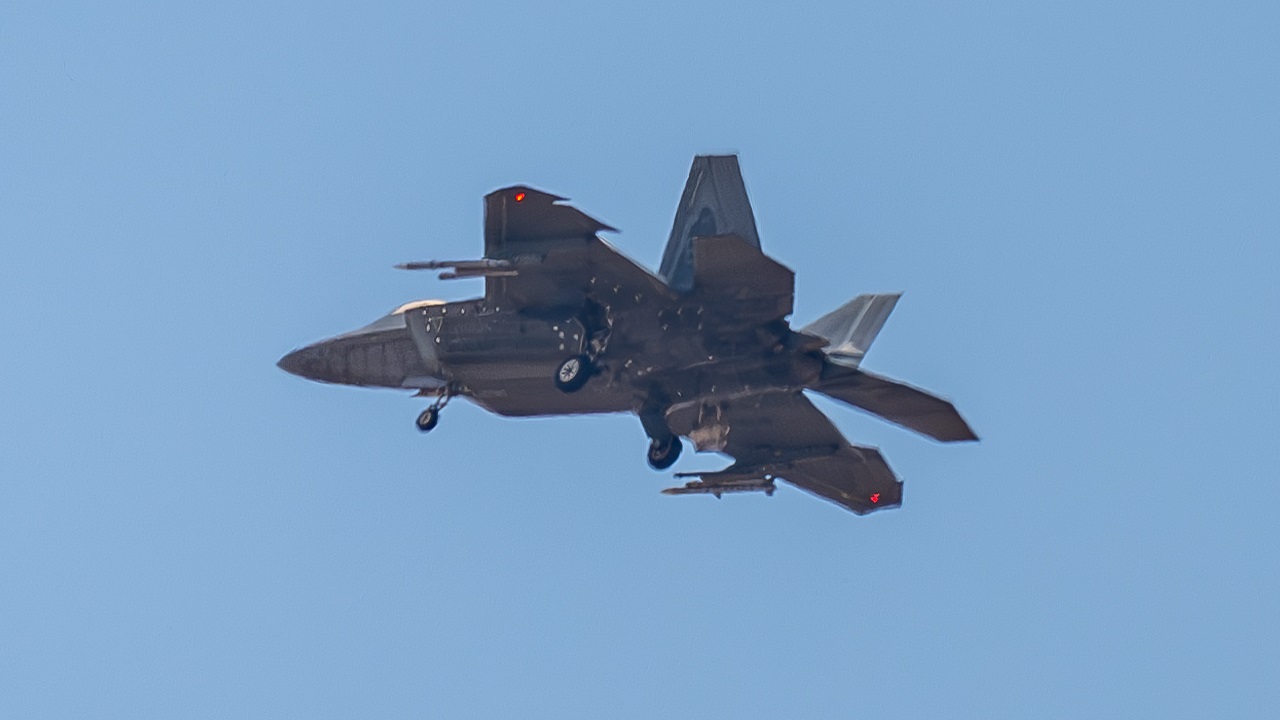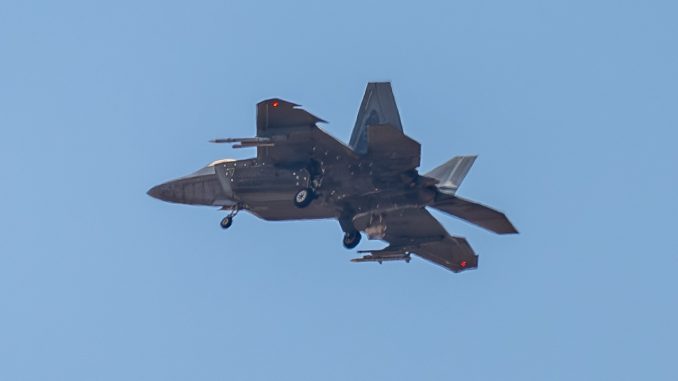
Although this feature has not been deployed to operational units, the F-22 is also capable of carrying AIM-120 AMRAAM air-to-air missiles externally.
A US Air Force F-22 Raptor was recently spotted in flight in an interesting, rarely seen configuration. The photo, sent to us by aviation photographer Fred Taleghani, shows the F-22 with two external racks, each equipped with an inert AIM-120 AMRAAM (Advanced Medium-Range Air-to-Air Missile).
The aircraft, followed by another in a clean configuration, was scheduled to land at Edwards Air Force Base in California on August 8, 2024. Both F-22s were assigned to the 411th Flight Test Squadron and were possibly returning from a mission over the Panamint Valley.
The external weapons mount on the F-22 is nothing new, as it was tested as part of the US Air Force’s requirements in the early 2000s. Specifically, the service required two basic externally loaded configurations, one with only two 600-gallon external fuel tanks (EFT) and one with both tanks and four AIM-120 missiles.
The EFT-only configuration is commonly seen on overseas F-22 missions, but is also sometimes seen on F-22s in Alaska during Quick Reaction Alert (QRA) missions. The Raptor’s EFTs are designed to be jettisoned along with their pylon if necessary, giving the aircraft some stealth and performance back.
On the other hand, operational units with externally mounted missiles have never been seen. This configuration has only been observed on test aircraft flying with a CATM-120 (the inert variant of the AMRAAM) under each outer pylon, without the EFTs on the inner pylons.
According to the limited information available, the AIM-120s are mounted on LAU-128 missile rails, allowing a total of four missiles to be carried externally. The LAU-128 can also accommodate AIM-9 Sidewinder missiles, although the weapon has never been seen mounted externally on the Raptor.
Although we do not know the reason for the test flight, it is easy to imagine that it could have been either a training mission for the USAF test pilot school or a test mission related to the upgrades currently being developed for the F-22.
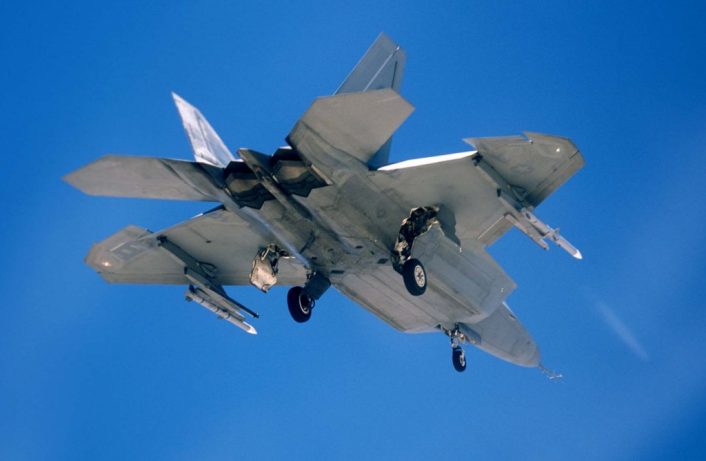
The F-22 upgrades
Some of the upgrades expected for the F-22 Raptor were revealed in the FY23 budget request documentation and in an official artwork provided by Gen. Mark Kelly, then-commander of Air Combat Command. The artwork shows three Raptors loaded with new stealth external fuel tanks, two faceted underwing pods, and a new, undisclosed air-to-air missile. But there are other new features in the documents that reveal a previously undisclosed relationship between the F-22 and the development of Next Generation Air Dominance (NGAD).
Two years after the upgrades were announced, earlier this year we may have caught our first glimpse of the new stealth external fuel tanks being developed for the F-22 Raptor. The aircraft was actually spotted near the Mojave Air and Space Port, showing the Raptor with two fuel tanks, the shape of which is reminiscent of the one shown in 2022.
The new tanks are officially known as the Low Drag Tank and Pylon (LDTP) and are designed to be more stealthy and aerodynamic than the current 600-gallon fuel tanks. In the fiscal year 2023 budget request, the Air Force mentioned that the F-22 LDTPs are advanced technological designs that provide greater endurance and range while maintaining lethality and survivability, which is critical to conducting future missions and maintaining air superiority.
The low-drag tanks are designed to reduce drag, enable supersonic flight with external tanks, and increase the F-22’s range. The pylons feature intelligent pneumatic rack technology to precisely control ejection performance and have a smooth, windswept surface for minimal drag without bearings.
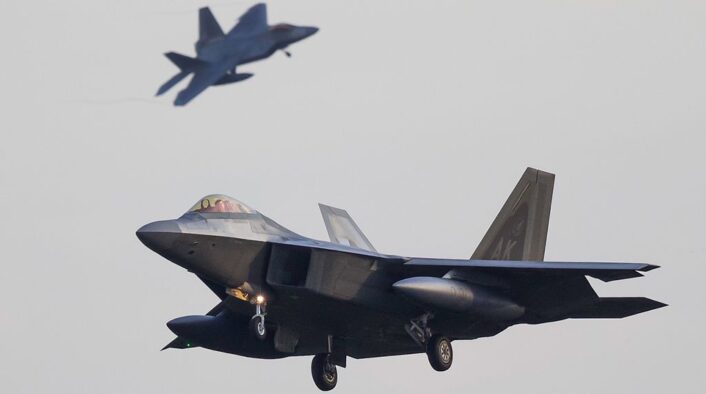
The two pods, installed under the outer underwing suspension points, were spotted during flight testing of an F-22 at the Air Force’s Plant 42 in Palmdale, California, back in February 2022. The latest budget documents mention an infrared search and track sensor (IRST) being developed for the F-22, which could be the sensor housed in the two pods, although they could have other functions besides the IRST.
In July 2024, after a test campaign at Nellis AFB in Nevada, we were able to get a close look at one of the capsules installed under a Rockwell Sabreliner 65 test bed. One would have expected to see some sort of transparent surface associated with the IRST, but the surfaces at the top of the capsule appeared to be opaque. We cannot rule out the possibility that there are two different variants of the capsule, depending on the equipment inside.
The final upgrade shown in the artwork is a new, unknown air-to-air missile. Although a number of air-to-air missile programs are being worked on, it is possible that the missile shown in the image is a representative design, possibly the original, for the top-secret AIM-260 missile. To date, the missile has never been shown in an image and details about the program are very scarce.
The development of the AIM-260, also called the Joint Advanced Tactical Missile, was first unveiled in 2019 and has been in the works since at least 2017. The goal of the new long-range air-to-air missile is to replace the AIM-120 AMRAAM (Advanced Medium Range Air-to-Air Missile) and counter the threat posed by the Chinese PL-15 missile, while preventing foreign threats from having a longer range than the AIM-120.
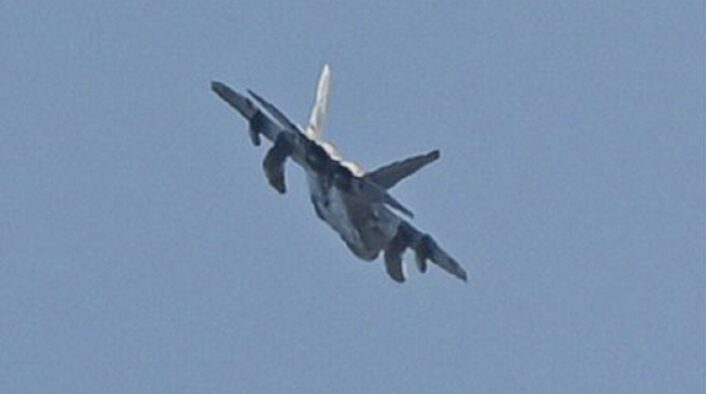
Among the few known technical details is that the new missile will be compatible with the dimensions of the AMRAAM, but will obviously have a longer range. It will initially be carried in the weapons bay of the F-22 and F/A-18, with the F-35 to follow. Flight tests are already underway and the missile is expected to be operational next year. For these reasons, it would be reasonable to assume that the missile shown in the picture could at least be a reference to the AIM-260.
Other upgrades mentioned in the budget request include Identification Friend or Foe (IFF) in Mode 5, Link 16 and a multifunctional information distribution system, the Joint Tactical Radio System (MIDS JTRS), a new Operational Fight Program, advanced electronic radar protection, modernization of the embedded GPS/inertial navigation system (INS) (EGI-M), an open systems architecture (OSA), and new encrypted radios.
As part of the Next Generation Fixed Wing Helmet program, F-22 pilots are also currently testing a new helmet to replace the current HGU-55P helmet, which has been the standard helmet for 40 years. The goal is to provide pilots with a more comfortable, stable and balanced platform for using helmet-mounted devices without causing the user neck pain and discomfort.
Despite various integration efforts in the past, the F-22 is not yet equipped with a helmet that provides essential flight and weapon targeting information through line-of-sight imagery: The shape of the Raptor canopy, which is optimized to maintain low visibility, does not provide sufficient freedom of movement and minimum visibility for a pilot wearing the JHMCS or Scorpion.
Thanks again to Fred Taleghani for letting us use his photo. Follow him on Instagram at FreddyB Aviation Photography for more!

